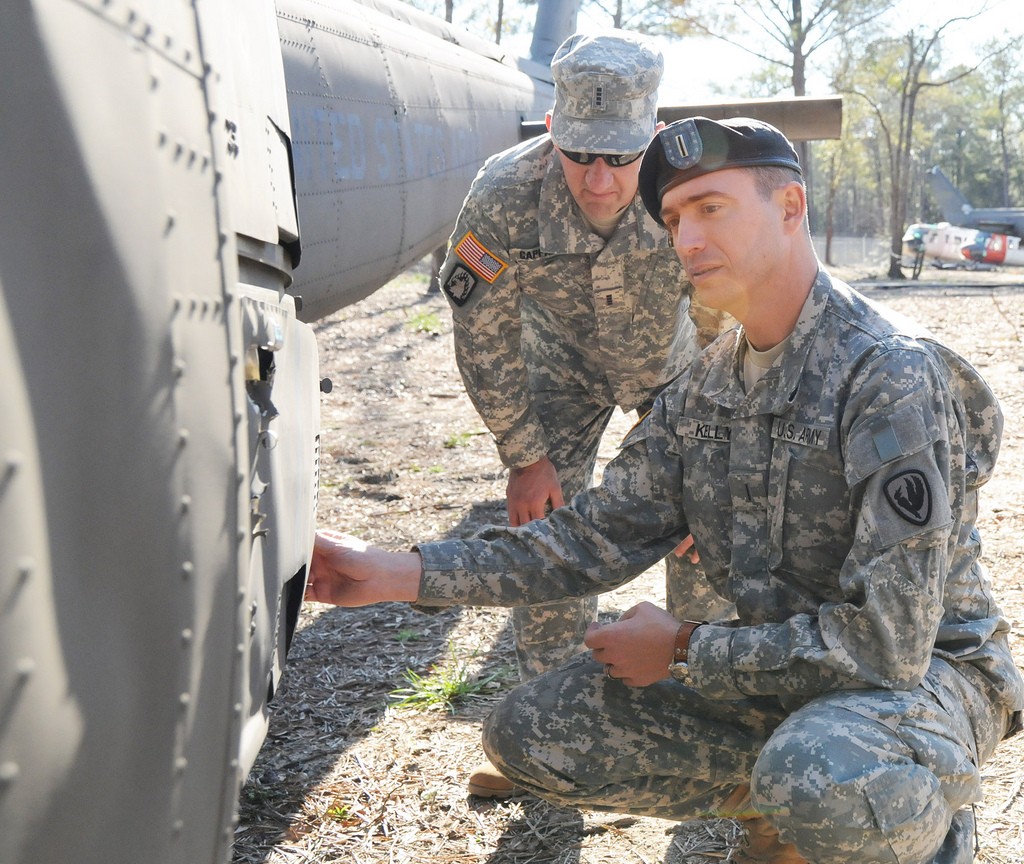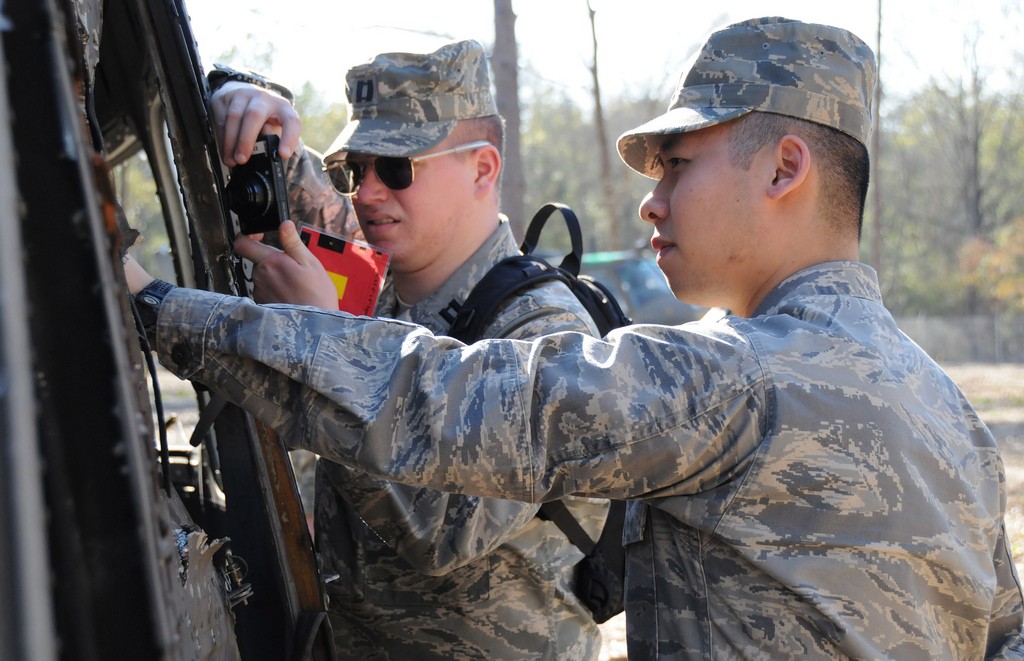FORT RUCKER, Ala. -- Officers from all military branches participated in a joint exercise here in mid-February as part of the Aircraft Shoot Down Assessment Team.
The idea behind the exercise is to teach combat assessors how to recognize how an aircraft became battle-damaged and how to best ensure that aircraft's survivability in the future.
After spending three days in a classroom setting, the group of about 15 Soldiers, Marines, airmen and naval officers put what they learned into practice at the "Bone Yard" off Engineer Road Thursday.
"This is phase one of a three-phase training process to build new combat assessors," said CW5 Brendan Kelly, ASDAT team chief. "Here in the field, we get to put what we learned in the classroom into practice. All of the aircraft they're working with have been deliberately shot with various types of weapons we know we'd go up against in combat theater."
Kelly, while acting as one of the event hosts, also participated as a student. He said it was imperative for him to gain the same knowledge as those who were visiting.
"It's important I see this from beginning to end because I have to be able to use these skills the next time they come into play and I need to understand how to make this program better or how to maintain the level of excellence we've achieved," he said. "As a student, the information has been overwhelming as it's only one facet of aircraft survivability. The cadre here and those visiting have made it all so much more accessible. That has tempered some of the reservations some might have had about getting out and looking at real (battle-damaged) aircraft."
This training exercise has been done four previous times at Fort Rucker and those who attended said the information and training they received were invaluable.
"This is my second time through the course and I was very happy to have a refresher," said Air Force Capt. Dane Batema, 780th Test Squadron senior weapons test engineer from Eglin Air Force Base, Fla. "The classroom part was nice, but you can't beat being out here, getting practical hands-on experience."
Marine Reserve Lt. Col. Mark Harrison, Joint Combat Assessment Team member from Pensacola, Fla., said he was impressed by the vast amount of knowledge available to those going through the course, but it was the instructors who made the biggest impression on him.
"This course wouldn't have been nearly as effective if it weren't for the high level of compassion shown by the instructors," he said. "The topics they covered in class exposed me, for the first time, to some of the resources I would use, whether it would be maintenance personnel or some of the tools they use for assessments. The hands-on exercise really brought it all together."




Social Sharing